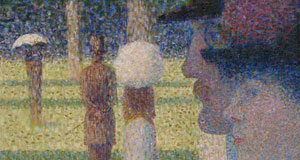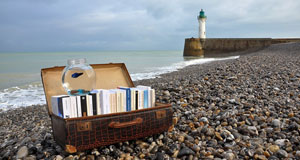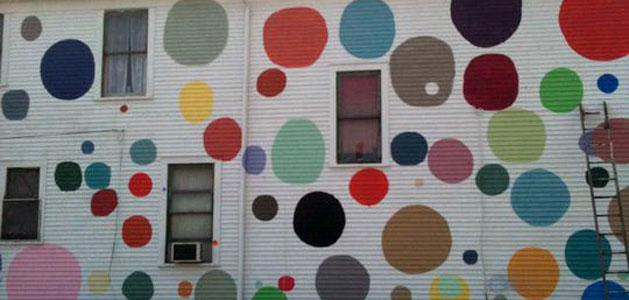Amazing Animal Alliterations
Students will learn to write using alliteration. Students learn to create illustrations that support and reflect their writing.
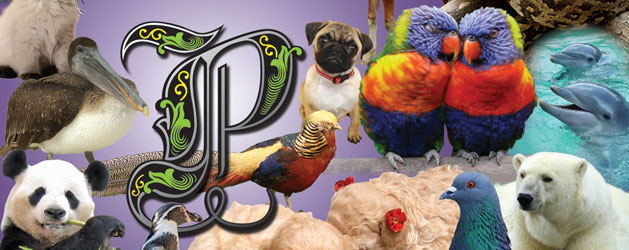
Task
Alliteration is a powerful way to attract and entertain a reader. In this project, your class will use their writing skills to create their own Amazing Animal Alliteration book.
Engage
Read Marti and the Mango to set the stage for recognizing and utilizing alliteration as a tool to entertain readers. As you read, identify alliteration and how it is used in the story. This will prepare students for how to use alliteration when they create their own original sentence.
Tongue twisters often use alliteration. Share a few tongue twisters with your students. You might try nursery rhyme favorites like Betty Botter Bought Some Butter or Peter Piper:
- Peter Piper picked a peck of pickled peppers.
- A peck of pickled peppers Peter Piper picked.
- If Peter Piper picked a peck of pickled peppers,
- Where’s the peck of pickled peppers Peter Piper picked?
Before students work on creating their own pages, write a sentence together to practice. Choose a letter from the alphabet. Select a hard or an easy letter depending on the ability level of your class. Begin by brainstorming with the class all the animals that begin with this letter. For example, if you choose B, students will brainstorm examples such as bear, beaver, bunny, bobcat, bird, buffalo.
As a class, write an original sentence using alliteration. A great place to start is by creating a short sentence in the noun–verb–noun format, starting with the animal. As students suggest new verbs and nouns, write them on the board and then choose the ones you want to use. An example might be, “Birds build bubbles.”
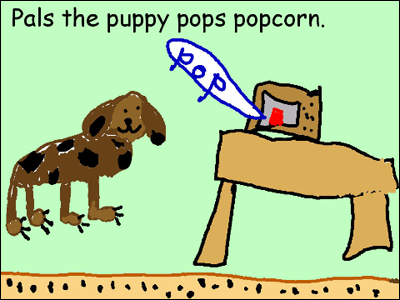
Now, have the class brainstorm all of the adjectives and adverbs they can think of for this letter. For example, blue, bounce, bravely, build, break, big, and bubble. Then, see where you can add them into the sentence. For example, Blue birds build big bubbles.
Log in to Wixie or Wriddle and create a new blank project. Ask a student volunteer to draw a picture depicting the sentence. If you have an interactive whiteboard, work together as a class to take turns using the paint tools to illustrate the sentence. Have a strong reader read the sentence as you record it on the page.
Create
Have students draw a letter out of a bag or assign letters based on student academic ability. Each student should begin by brainstorming animals that begin with this letter.
Then, have students brainstorm all of the verbs, nouns, adjectives, and adverbs they can think of that begin with their letter. If students are struggling, have them ask their classmates for help. You might also want to assign this project for homework to involve the entire family.
Have students follow the noun–verb–noun model to begin writing their sentences. Then, add in additional adjectives and adverbs.
Once students have written their alliterative sentences, have them think about how they might create an illustration that supports their writing. Have them look at the adjectives to develop details they will include in their drawings.
Next, have students use Wixie or Wriddle to write their sentences, illustrate the page using the paint tools, and record themselves reading the sentences. Have each student save his or her page, naming it to indicate the letter and the author (e.g., “z_alicia”).
Share
Print each student's page and bind them together to create a printed version you can keep in your classroom library. If students created individual pages using Wixie, combine them together using Wixie's Project Wizard feature.
Get your school together for a formal presentation of your class’s Amazing Animal Alliterations book! You will also want to share electronic and print copies in your school’s media center.
Assessment
Even if they are unfamiliar with the term alliteration, as you read Marti and the Mango and several tongue twisters, you can begin to assess whether students understand how it can be used to make writing interesting and enjoyable.
As you write an alliterative sentence as a class, you will be able to assess the vocabulary skills of your students and assign letters that match their ability levels. Their final alliteration pages will allow you to assess their ability to write with alliteration, their current reading fluency, and their ability to represent words and ideas visually.
Resources
Moreton, Daniel. Marti and the Mango. ISBN: 1556702647.
Artell, Mike. Giggle Fit: Zany Tongue-Twisters. ISBN: 1402727747.
Standards
Common Core State Standards for English Language Arts - Grade 2
CCSS.ELA-LITERACY.RL.2.4
Describe how words and phrases (e.g., regular beats, alliteration, rhymes, repeated lines) supply rhythm and meaning in a story, poem, or song.
CCSS.ELA-LITERACY.W.2.5
With guidance and support from adults and peers, focus on a topic and strengthen writing as needed by revising and editing.
CCSS.ELA-LITERACY.W.2.6
With guidance and support from adults, use a variety of digital tools to produce and publish writing, including in collaboration with peers.
CCSS.ELA-LITERACY.SL.2.5
Create audio recordings of stories or poems; add drawings or other visual displays to stories or recounts of experiences when appropriate to clarify ideas, thoughts, and feelings.
ISTE NETS for Students 2016:
6. Creative Communicator
Students communicate clearly and express themselves creatively for a variety of purposes using the platforms, tools, styles, formats and digital media appropriate to their goals. Students:
a. choose the appropriate platforms and tools for meeting the desired objectives of their creation or communication.
b. create original works or responsibly repurpose or remix digital resources into new creations.
d. publish or present content that customizes the message and medium for their intended audiences.





